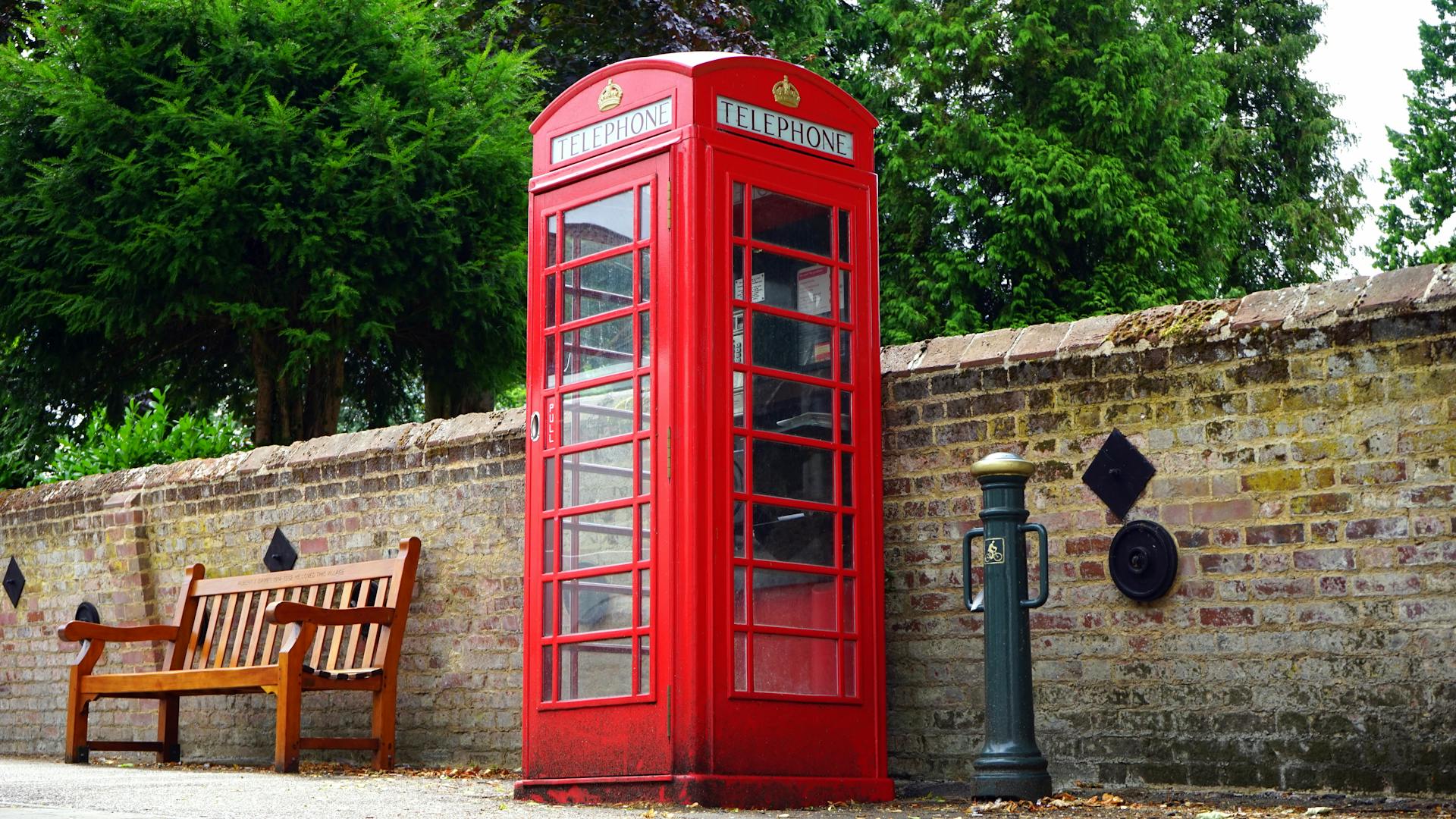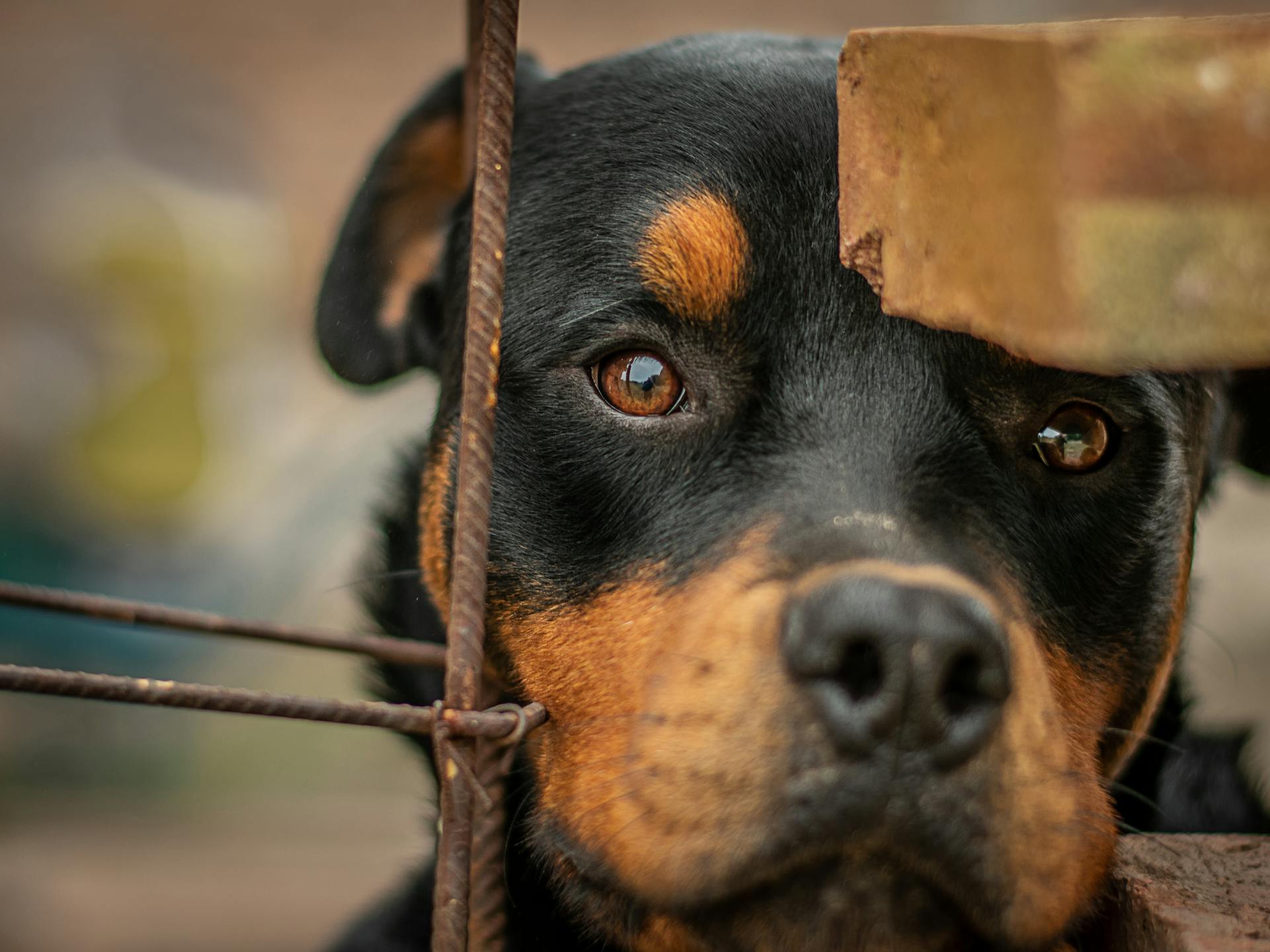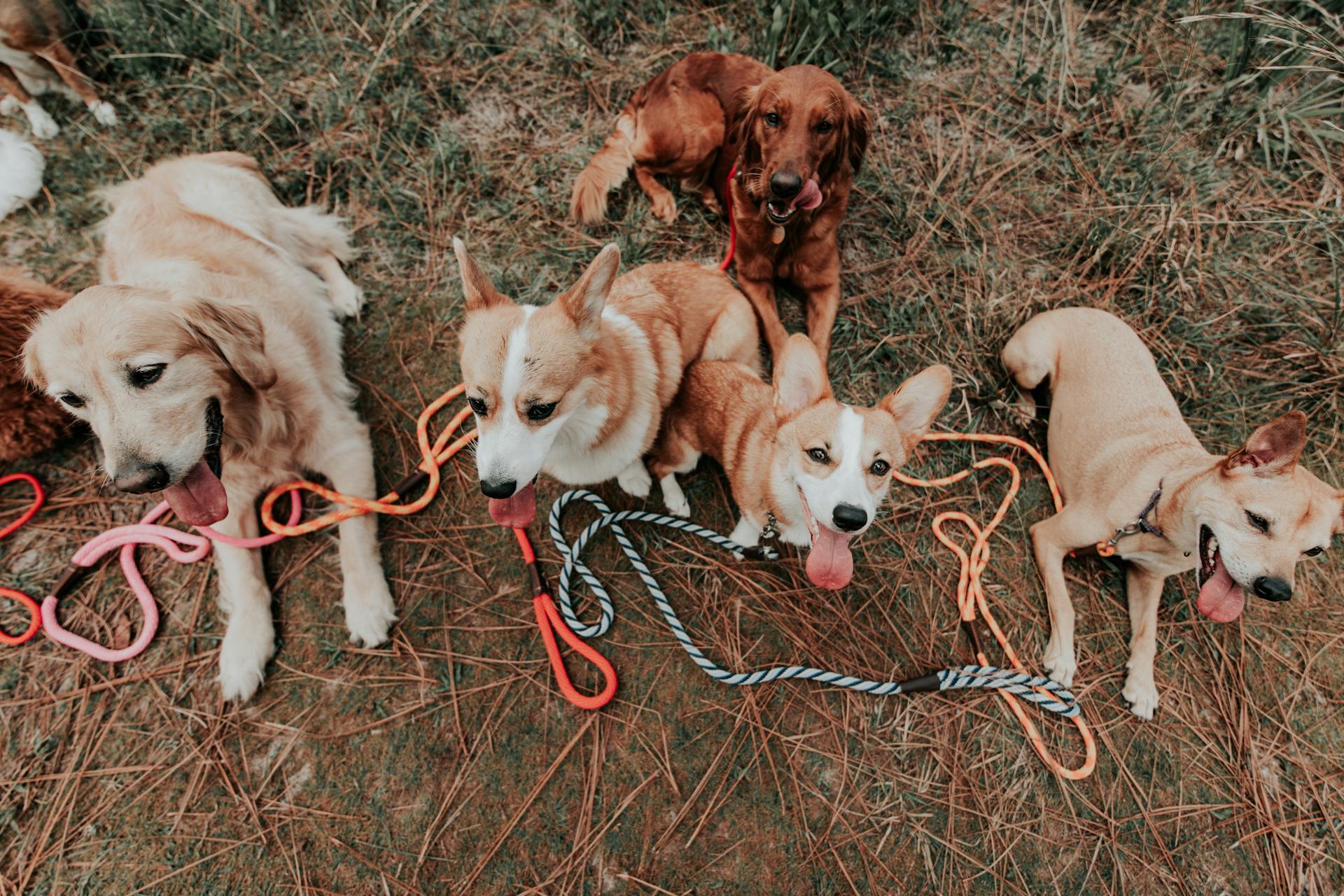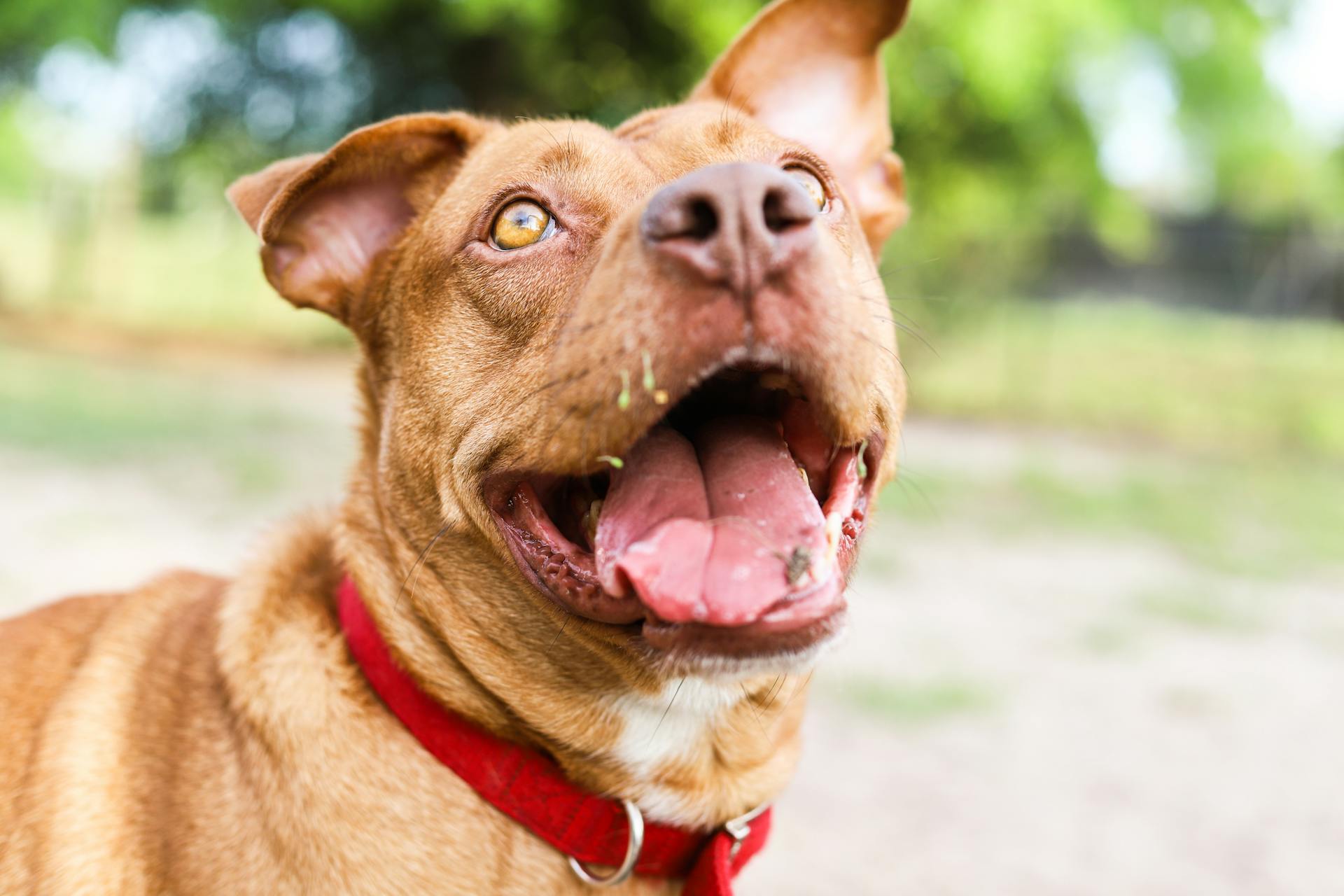
In the UK, some dog breeds are considered a risk to public safety and are banned from being kept as pets. The Pit Bull Terrier is one such breed, known for its strong instincts and potential to be used for fighting.
The Pit Bull Terrier is often misunderstood, but its history as a fighting dog cannot be ignored. This breed was originally bred for bloodsports in the 19th century.
The law surrounding banned dog breeds in the UK is strict, with owners facing penalties for keeping a prohibited breed. The Dogs Act 1991 is the legislation that governs the ownership of certain dog breeds, including the Pit Bull Terrier.
If you're considering getting a dog, it's essential to research the breed thoroughly to ensure you're making an informed decision.
Additional reading: Fighting Dogs Breeds
Banned Dog Breeds in the UK
The UK has strict laws regarding certain dog breeds that are deemed to be a danger to the public. The breeds that are currently banned include the Pit Bull Terrier, Japanese Tosa, Dogo Argentino, and Fila Brasileiro.
If this caught your attention, see: Dogs Breeds That Start with B
If you own one of these breeds, you may be subject to having your dog taken away by the police or local council dog warden, even if it's not acting dangerously. The police or council will assess whether your dog is a banned breed, and if so, you may be able to keep it, but only if it has a valid Certificate of Exemption.
The Dangerous Dogs Act in the UK makes it illegal to own, breed, abandon, give away, or sell these banned breeds. This ban also extends to dogs that are similar in appearance to the banned breeds, even if they're crossbreeds.
Here is a list of banned dog breeds in the UK:
- Pit Bull Terrier
- Japanese Tosa
- Dogo Argentino
- Fila Brasileiro
- XL Bully (from February 1st, 2024)
If your dog is deemed to be a banned breed, it will be held in kennels while being assessed, and you won't be allowed to visit it until the court makes a decision. You can give up ownership of your dog, but you can't be forced to, and if you do, your dog could be destroyed without going to court.
Consequences and Certificates
If you're a dog owner with a banned breed, you'll need to follow certain rules to keep your dog. If you have a Certificate of Exemption, you can keep your dog as long as it doesn't behave dangerously and you follow the rules.
To get a Certificate of Exemption, you'll need to meet specific requirements. Your dogs must be neutered, fitted with a microchip, and kept on a lead and muzzled in public. They must also be kept in a secure place so they can't escape.
You'll also need to take out insurance against your dog injuring others, be over 16, and show the Certificate of Exemption when asked by a police officer or council dog warden. If you change address or your dog dies, you'll need to let the Index of Exempt Dogs know.
Here's a summary of the key requirements:
- Neutered
- Fitted with a microchip
- Kept on a lead and muzzled in public
- Kept in a secure place
- Take out insurance
- Over 16
- Show Certificate of Exemption when asked
- Notify Index of Exempt Dogs of address change or dog's death
If your dog is taken away due to being a banned breed, it will be held in kennels while being assessed. This can be a stressful process for the dog, and many find it difficult to cope.
Banned Types Consequences

If you have a banned dog, the police or local council dog warden can take it away and keep it, even if it's not acting dangerously or there hasn't been a complaint.
Your dog will be held in kennels, away from you, while a police or council dog expert assesses what type of dog it is and whether it's a danger to the public.
A police or council dog expert will judge what type of dog you have and whether it is (or could be) a danger to the public.
If your dog is deemed a banned type, you won't be allowed to visit it while you wait for the court decision.
You can give up ownership of your dog, but you cannot be forced to. If you do, your dog could be destroyed without you even going to court.
Many dogs find the assessment process very difficult to cope with and can result in undesirable changes in health and behaviour.
On a similar theme: Common Police Dogs

Some dogs may be released, while others will be kept in kennels while the police or council apply to a court.
Here are the possible outcomes for your banned dog:
You cannot apply for a Certificate of Exemption for your dog. You'll only have one if a court gave you one or you applied for one in the past.
If You Have a Certificate of Exemption for Your Dog
If you have a Certificate of Exemption for your dog, you're allowed to keep a banned dog as long as it doesn't behave dangerously and you follow certain rules.
Your dog must be neutered and fitted with a microchip. You'll also need to keep your dog on a lead and muzzled at all times when in public.
You must keep your dog in a secure place so it can't escape, and you'll need to take out insurance against your dog injuring other people.
Check this out: Dog Breeds That Don't Need Grooming
You must be aged over 16 to have a Certificate of Exemption, and you'll need to show the certificate when asked by a police officer or council dog warden.
Here are the key things you need to do with your Certificate of Exemption:
- Keep your dog neutered and microchipped
- Keep your dog on a lead and muzzled in public
- Keep your dog in a secure place
- Take out insurance against your dog injuring others
- Show your Certificate of Exemption when asked by authorities
- Notify the Index of Exempt Dogs if you change address or your dog dies
You'll also need to report a dog that's out of control to the authorities.
Frequently Asked Questions
Can I own a pitbull in Scotland?
As of August 2024, Pit Bull Terriers are expected to be banned in Scotland, but check for updates on the latest regulations. Currently, owning a Pit Bull Terrier in Scotland is likely to be restricted or prohibited.
What is breed specific legislation in the UK?
In the UK, Breed Specific Legislation (BSL) restricts the ownership of certain dog breeds considered a threat to public safety, introduced in 1991 as part of the Dangerous Dogs Act. This legislation aims to protect people from aggressive breeds.
What dogs have to be muzzled in the UK in 2024?
In the UK, XL Bully type dogs and those with XL Bully characteristics will need to be muzzled, unless they have a Certificate of Exemption. Muzzling requirements apply from February 1st, 2024.
Why are pitbulls illegal UK?
Pitbulls were banned in the UK in 1991 due to a series of fatal attacks on humans between 1981 and 1991, prompting the government to take action under the Dangerous Dogs Act.
Are Alaskan Malamutes banned in the UK?
No, Alaskan Malamutes are not banned in the UK. However, their ownership is subject to certain regulations under the Dangerous Dogs Act 1991.
Sources
- https://www.gov.uk/control-dog-public/banned-dogs
- https://petraveller.com.au/blog/banned-dog-breeds-in-the-united-kingdom
- https://www.rspca.org.uk/whatwedo/endcruelty/changingthelaw/bsl
- https://yappily.co.uk/full-list-of-banned-dog-breeds-in-the-uk-which-breeds-are-prohibited/
- https://www.pbspettravel.co.uk/blog/uk-favourite-dog-breeds-which-are-banned-in-other-countries/
Featured Images: pexels.com


